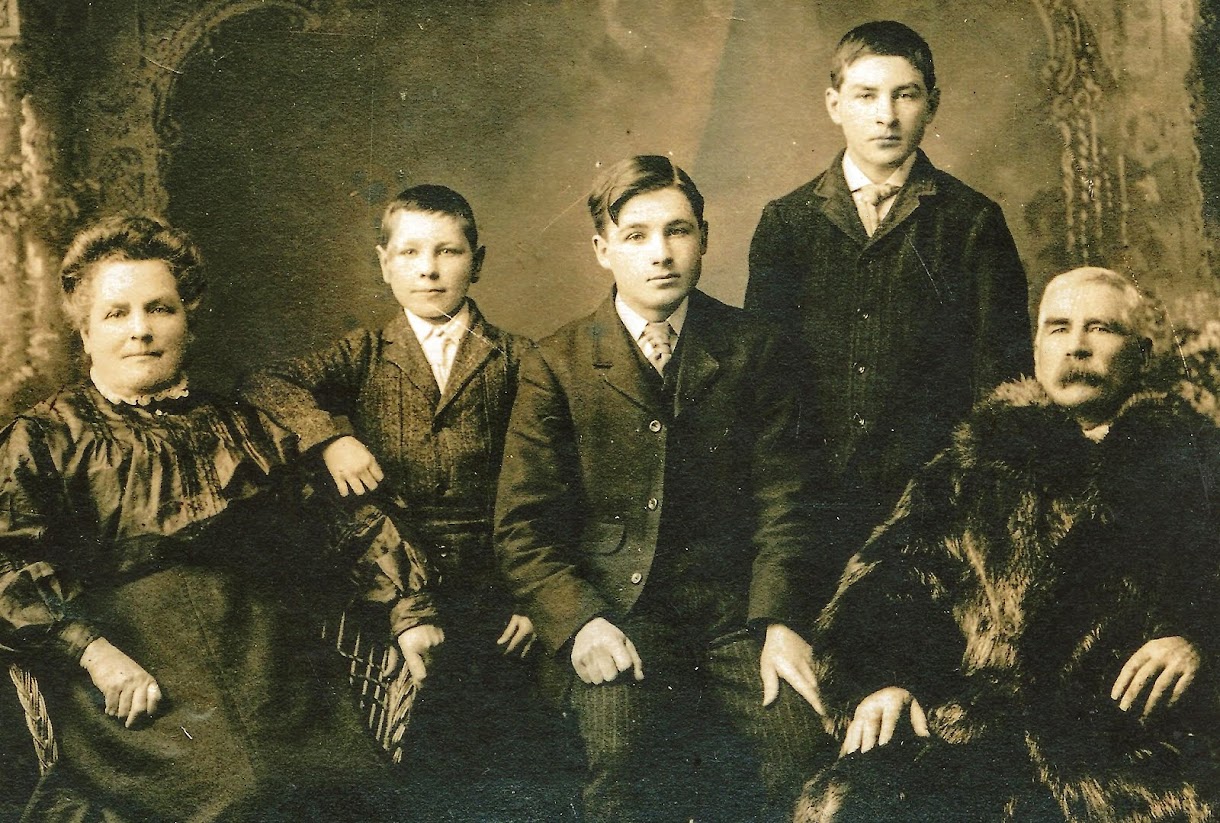My dad was 16 or 17 when
he signed up to join the Canadian military in WWII.
He asked to join the Air
Force but was eventually assigned to the
Navy. In residence at Quebec City Army Barracks at the time, his basic training as a signalman was completed in a year (c.1942).
Photo: Plains of Abraham, Quebec City
James O'Kane is back row, 4th from right
He was assigned duty on an Examination Vessel, the HMCS Murray Stewart in Halifax, Nova Scotia and St. John, New Brunswick.
The Murray Stewart was built in 1918, purchased in 1922 by the Department of Transport and lent to the Royal Canadian Navy in 1942. It served most of the war as an examination vessel and was paid off on 22 Aug 1945.
The following are extracted from an article on the Naval History of New Brunswick ... read the full story here.
" ... HMCS Murray Stewart
Captor and Invader were found to be too small for regular and reliable duty in the examination anchorage, so the ocean going tugs Murray Stewart and Ste. Anne were acquired, arriving for duty in mid-October. This allowed Captor and Invader to concentrate on inner harbour security, which they did for the balance of the war. The final piece of the puzzle—a patrol force for the harbour’s outer reaches—was at least temporarily filled in January 1940 when HMCS Cartier, a former hydrographic survey ship fitted with one four-inch gun and four depth charges, arrived to patrol the bay ...
... by the summer of 1940,
Saint John had settled into a routine. HMCS Ships Murray Stewart and the newly
arrived Zoarces operated the examination service and remained in that task
until the end of the war. HMCS Cartier continued to patrol the bay, while Captor
and Invader conducted harbour patrols. DEMS personnel worked on large liners
and AMCs called at the dockyard, while the NCS staff controlled the movement of
vessels throughout their zone. In August, the examination vessels helped
calibrate the new guns at the Mispec Point counter-bombardment battery and
approval was received to establish a War Watch Station at Tiner’s Point.
Tenders for the Port War Signal Station at Mispec, planned a year earlier, were
submitted in September, and in November, as traffic in the Gulf of St. Lawrence
and St. Lawrence River dwindled for the winter, traffic increased in Saint
John ... "
AFTER THE WAR
It was a coast guard vessel and icebreaker between 1920 and 1942. Built when the First World War was still raging and in the decades that followed, it broke through huge chunks of ice, carried the coast guard, and served the Royal Canadian Navy in the Second World War.
Sold in 1946, she was in service by 1951 as the David Richard at her native Port Arthur, and in 1979 was renamed Georgian Queen.
FOR 40 YEARS
The Georgian Queen will be retired in 2014. Owned and operated by the Robillard family, it carried tens of thousands of people each year for 40 years on 30,000-Island tours.
The Georgian Queen will be retired in 2014. Owned and operated by the Robillard family, it carried tens of thousands of people each year for 40 years on 30,000-Island tours.





No comments:
Post a Comment